Roles of a worker bee
A closer look at the 7 roles and responsibilities of the worker bee
There are three different members to a honey bee hive: workers, drones and the queen. While each member of the colony holds an important role, there’s only one true Jack of all trades in the colony: the worker bee. Worker bees are female and they make up the majority of the colony – up to 90%. At the height of the blooming season, they often number from between 50,000 to 80,000 bees!
Because worker bees work on so many different tasks and have so many different responsibilities, you’ll find them anywhere and everywhere throughout the hive. Although worker bees have a very short lifespan (only roughly 30 days!), in her short life a worker bee will take on all of these different roles: housekeeper, nurse, attendant to the queen, architect, ventilator, guard and, finally, forager. How’s that for a diverse skill set!
While workers naturally evolve into these different roles, the “assigning” of the roles is fluid and is always based on the immediate needs of the colony. For example, architect bees may take on the role of ventilator if the colony experiences a string of hot days and needs added airflow.
-
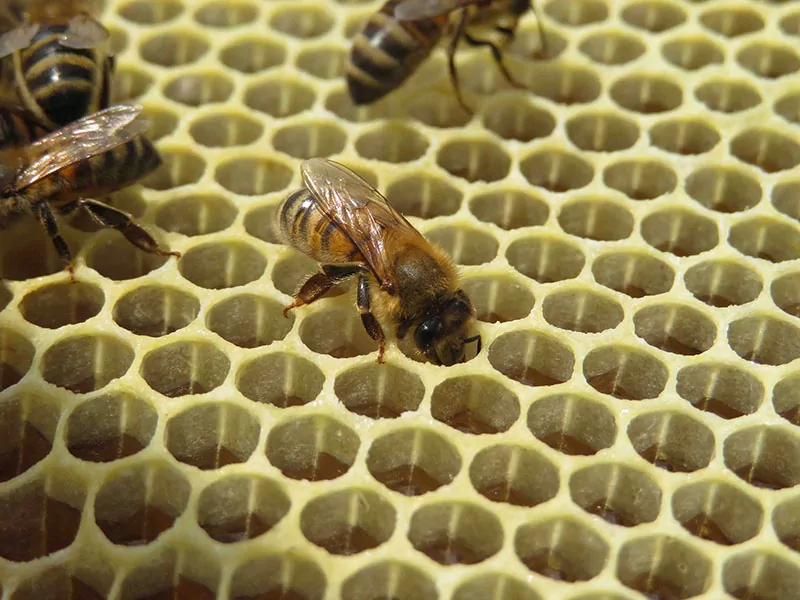
-
THE FIRST FEW DAYS
Housekeeping
Worker bees develop inside honeycomb cells that are capped over with a thin layer of beeswax. When they are ready to emerge, they gnaw away at the wax capping of their cell and crawl out – already eager to get working! Bee-lieve it or not, the very first thing that a newly emerged worker bee will do after entering the world of the hive is… head back to her cell and clean it out as quickly as possible, making it ready to receive a new egg! That’s right, there’s not much fanfare in a honey bee hive! Our beloved little worker bees get to work pretty much straight away.
A worker’s first role is as a housekeeping bee, cleaning out other empty cells and other parts of the hive. The queen will only lay eggs in immaculate cells, and therefore the housekeeping bees’ work is never done.
How long will she be a “housekeeper” for?
Worker bees will typically carry out housekeeping duties for the first 1-3 days of their life.
The next two weeks of tasks
The first two weeks are a particularly fluid time in the life of a worker bee. She will typically move from housekeeping into the role of a nurse bee, feeding and looking after the developing bees in the hive. And from that point, she will carry out a whole spectrum of different chores! Everything from acting as a member of the queen’s entourage, doting on her every need, to the much less glamorous job of mortuary/undertaker – bringing debris and dead bodies from natural die-off out of the hive!
-
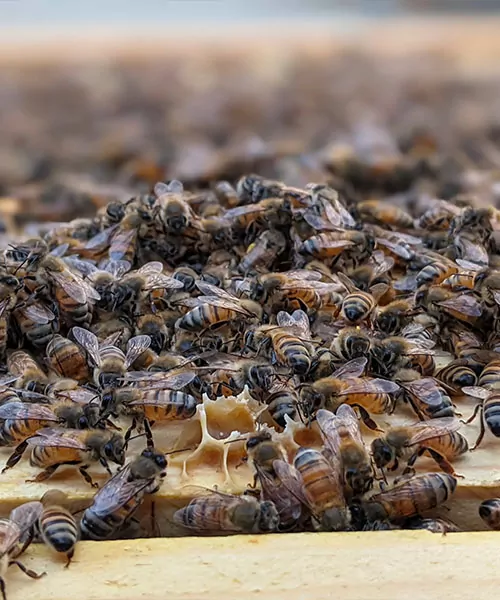
-
Nurse Bee
As a worker bee continues to mature, she will slowly develop different glands to help her carry out different roles. Some of the first glands to develop are her mandibular and hypo-pharyngeal glands (that’s a mouthful!). These will allow her to produce special nutrient-rich food for the eggs and larvae of her younger brothers and sisters made up of honey, nectar and royal jelly.
A nurse bee is always on the go! Being a nurse bee is a demanding job! A nurse bee spends anywhere from two to twenty seconds feeding brood cells – and she will feed up to 1300 cells a day!
-
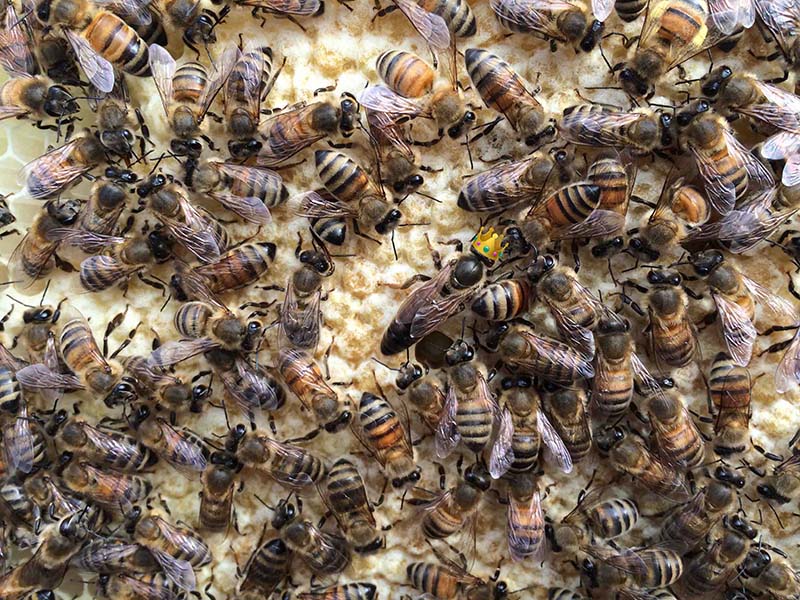
-
Serving as an Aide to the Queen Bee
Certain lucky worker bees may get the chance to become part of Her Majesty’s court or her “retinue” as it is sometimes called. The Queen’s Aides must tend to her every need. They must groom her, feed her, keep her hydrated, and clean away any of her waste.
By doing these duties for the Queen, it allows her to focus on her sole purpose, to keep the colony going by laying up to 2000 eggs every single day.
Is it true the worker bees kill the Queen bee?
The life of a Queen Bee sounds great huh? It’s not all as pretty as it seems. Even though the queen has literally everything done for her, she is under serious pressure to perform.Worker bees care for their hive and colony so greatly that if the queen is not performing as well as she should, they can and will kill her to make sure a new queen is brought in, one that can do the job more efficiently and support the needs of the colony better. The workers need a queen and the queen needs the worker, without each other the colony would never last.
When will a worker bee become an aide to the Queen?
A worker bee can be chosen to be an aide to the queen at any age between roughly 7-12 days old.
-
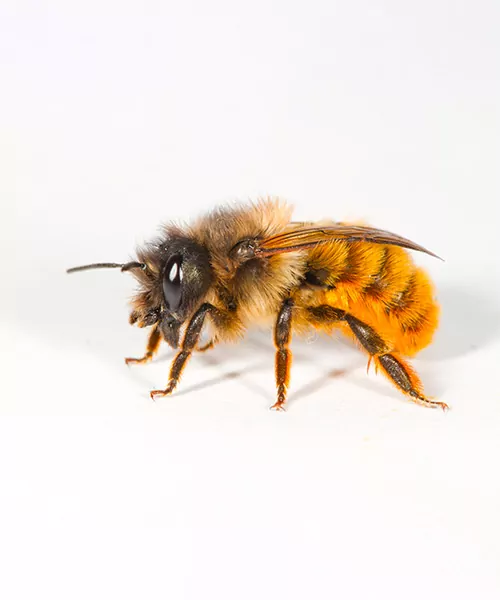
-
Wax Mason Role
To produce wax, a worker bee must activate her wax glands situated on the underside of her abdomen. She then excretes small transparent flakes which, once chewed and molded, become the edifice that is the honeycomb! Workers bees feed on honey to help with the wax producing process and must consume a lot of honey to reach maximum productivity.
At what age in life do worker bees become wax masons?
Worker bees usually become wax masons between 12-18 days old but older bees can also produce wax if they are required to, which they often are because at this age worker bees often overlap duties and responsibilities because they are old enough to conduct more roles within the hive. They just go wherever the colony needs them most. Other duties at this age include making honey and fanning the hive.
-
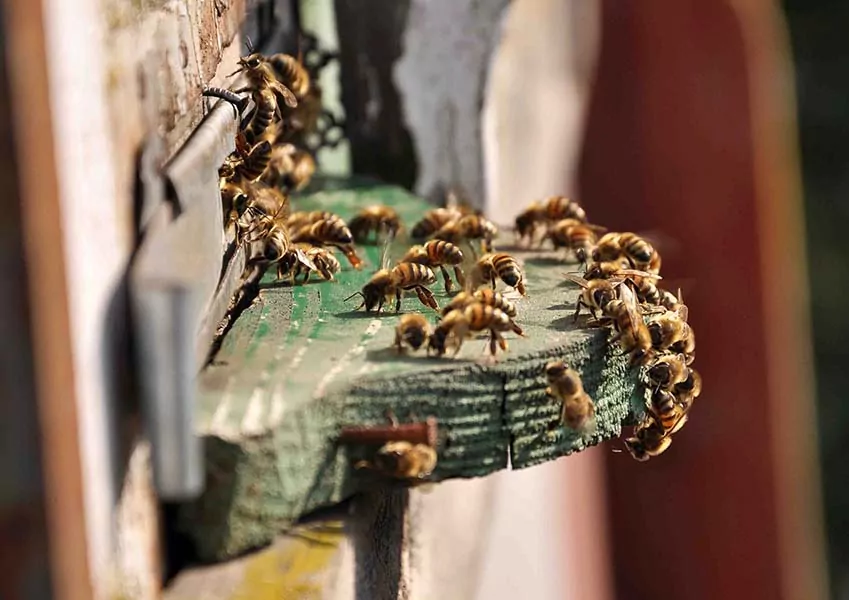
-
Airflow Control Role
As an older bee, now aged between 13-18 days old, she may now take on more demanding tasks. Airflow control or “Fanning” is where the worker bee joins a line of her peers at the front of the hive where they then proceed to beat their wings at high speeds to drag in the fresh air and circulate it around the hive cooling it down.
What is the purpose of honey bees Fanning?
Wing fanning’s main purpose is to circulate fresh air around the hive to cool it down and reduce the moisture inside the hive. This is a very important job because the honey-making process produces a lot of moisture inside the hive and fanning prevents the moisture and humidity from reaching unbearable levels.
Guard Role
Another role of the worker bee that is positioned at the entrance of the hive is when she is on Guard duty. Guard duty is her last in-hive duty, at age 18-21 days, where she will be relied upon to guard the hive from any threats. She will inspect any bee who is entering the hive, making sure that the bee entering belongs to that colony. She will inspect entering bees by identifying them by their scent, if they do not smell like they belong to the hive, they won’t be allowed to enter. This is to prevent bees from other hives from robbing their resources.
She will also look out for any predators such as wasps, hornets, a bear, or maybe a skunk that could cause a threat to the colony and the hive. If she does spot a threat she may sound the alarm with her pheromones.
Forager Role
Finally, for her last duty, the worker bee gets to leave the hive and take to the skies! The foragers are the worker bees we notice the most because they are out in the world, in our parks and gardens, visiting flowers in order to collect nectar, pollen, propolis and water and bring it back to the hive.
How far will a worker honey bee travel when she is a forager?
When she is a forager, the worker bee will fly within a radius of 5km around the hive and will do so vigorously until she eventually dies of fatigue.
-
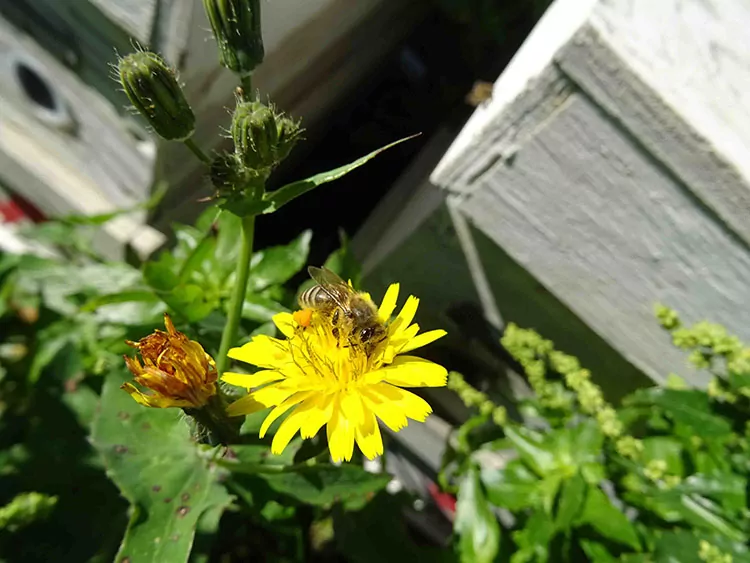
-
OTHER ROLES WORKER BEES CAN CARRY OUT
Scout honey Bee
Once the worker bee is old enough and strong enough to leave the hive, she isn’t always foraging for resources like water, nectar, pollen and propolis. She is also required to be a scout from time to time.
What is the purpose of a Scout honey Bee?
Scout worker bees are sent out further than the 5km radius of the bees on foraging duties. They fly further away from the mother colony in search of potential new homes. This is a vital task that takes place during bee swarming. The scouts will have located a few potential areas for the swarm to check out before they decide to settle and construct their new home.
What gives worker bees the ability to perform these roles?
The special anatomy of a worker honey bee! It is different to that of a queen bee’s anatomy and this special bee body allows them to perform the various roles of the worker bee that ultimately keeps the hive going and the colony inside alive.
First of all, worker bees have stiff, thick hairs on their back legs. These get called “Pollen baskets” they get this name because when the worker bee is out foraging and lands on a plant or flower they will get covered in pollen which will get collected in their hairy back legs allowing them to take it back to the hive to add to the never-ending resources. Pollen is one of the most important resources for worker bees because it is their main source of protein which they need to rear the larvae and young bees into strong worker bees. Another special element to the worker bee’s anatomy is their honey stomach, this organ is separate from the worker bee’s digestive system and used to collect nectar for the colony, another vital resource to keep the colony alive.
Keep learning: 7 things you can do to help bees
From the plants you grow to the food you eat, discover 7 ways to help protect bees and all pollinators.